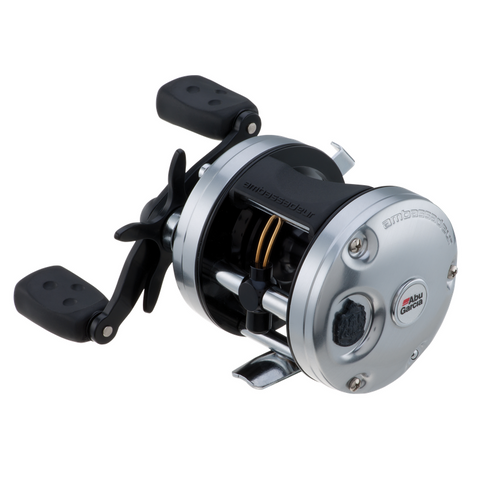Finding the right gear: Novice Musky Fisherman

When you dip your toe into musky fishing, there are many confusing takes that set a beginner back a mile when attempting to round up the right rod, reel, gear, and even fishing mantras. Here we can take some time to look at what’s on the market in the musky fishing world and find out what works for beginners based solely on skill level, not what the pros are using.
The first issue beginning musky anglers are faced might be the selection of a rod and reel that make sense when applied to skill level. How much do rods and reels really matter?? Honestly, they matter a great deal when approaching musky fishing as a new or even experienced angler, if for no other reason than they are going to be your most expensive purchase when outfitting your musky setup. Despite what the pros, guides or Youtubers recommend, you can fish for musky with an open face spinning reel. Because you may not yet have the ability to thumb control the line when casting or playing a catch, it isn’t the perfect set up, but it will work.
If you are new to musky fishing and are only familiar with an open face spinning reel, then you can start with open face and upgrade later. When selecting a spinning reel, you will want to seek out a larger reel, those targeting catfish or saltwater at box stores will work as they will need a heavy drag and line capacity to hold heavier braids. When the day comes and you’ve decided you want to give a baitcaster a try, maybe start with a round reel. They have a smaller footprint, are easier to maintain and are usually less expensive than the newer, larger low profiles super reels. I highly recommend a beginner try out an Abu Garcia 5500 or 6500. These reels are lower priced and can be maintained easily with plenty of replacement parts direct from retailers.

The most difficult part of reel control for a beginning angler is going to be thumbing the line. If like I suggested, you have started with an ABU 5500, you will quickly know what I mean when casting oversized musky baits. In the world of fishing smaller targets like panfish, changing the spool tension is unheard of as the size and weight of the lures don’t change very dramatically. When using an assortment of musky tackle the weight and size of the lure will dramatically change the speed of the spool release, so rather than changing the tension each time, it’s intensely easier to learn to control your cast with light thumbing of the line as it releases from the reel to prevent birds-nests or backlash. Gaining this level of control comes with time, but can managed with a simpler baitcaster without all the bells and whistles.
As for the rod, some pros and guides might like to use the newest, longest and most expensive rod on the market. Choosing a rod in this manner is not going to help a beginner. It’s best to choose a rod based on your size, fishing area, and average bait you’ll be using. For instance, a 5’6” angler fishing from the bank, purchasing a 9’6” heavy rod makes absolutely no sense. If you are fishing on a high decked boat and need extra length to figure 8 properly, then longer rods make sense; otherwise, don’t over compensate for your height! Typically, shorter individuals that are on low decked boats or fishing from a bank, won’t need a rod over 7' and beginners should stick to medium weight tackle so a Medium Heavy rod will do fine. I recommend a Musky Shop Shield Rod or St. Croix Mojo Musky. Taller individuals and professionals choose the longest rods for low water figure 8’s but upgrading costs a fortune and is unnecessary for beginners.

After you’ve solved the mystery of your rod and reel choice, moving on to “what should I have in my tackle box?” comes next. As a beginner, you should carry a small assortment of easy to use, and productive lures. For topwater, a Gooch’s Tally Wacker will get the job done with a straight-line retrieve and no fuss. Under the surface it’s best to stick with easy gliders, blades, and crankbaits. For gliders, the Phantom 4” Soft Tail is unmatched for ease of use with tiny taps of the rod or the 6” Drifter Hellpuppy. Either of these gliders make twitching super easy. For blades, there is only one that starts every time in double blades and that’s the Mepps #8 Flashabou. This is the most perfect example of a double-bladed bait on the market. It doesn’t have to be jerk-started, and can be reeled slow or burned quickly, no lesson necessary. Also, Mepps makes a great selection of single bladed baits that are throw and retrieve for novices. In the world of crankbaits, there are a blue billion selections. As far as successful and easy to use, I’ve found Llungen Lures check all the boxes and aren’t awkwardly large for new anglers. Llungen makes every special depth and size cranking bait to cover all of your needs in the water; preferences include the .22 Long and Short as well as the Chad Shad. Their baits are spectacular for novices that want to start with something manageable but also catch fish.

Outside of rods, reels, and lures, there are a whole host of other necessities that go along with musky fishing but these suggestions will get you pointed in the right direction. Tools and nets are a must but those are just large equivalents of what most bass anglers are already using.
As always, beginning a new sport or upgrading in the name of catching a new species requires a little guidance on what might be the best bet without an up-sell, so maybe you can use these tips on beginner options that might help you get started fishing for musky for a smaller price tag. (Also, save money and buy yourself a clear Plano box until you need to upgrade!)
